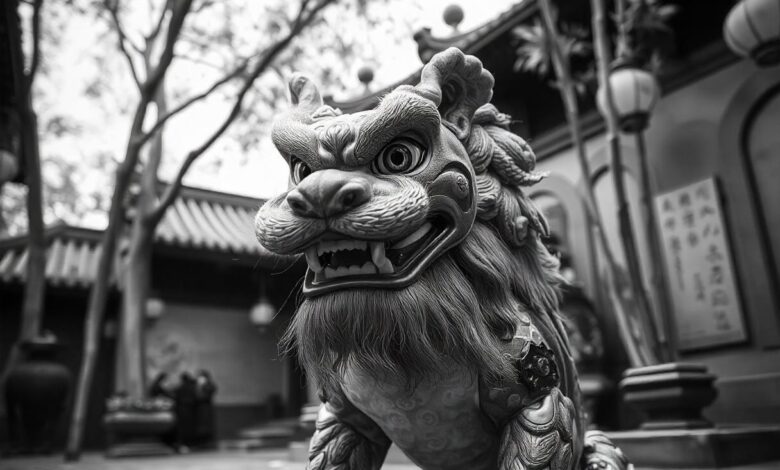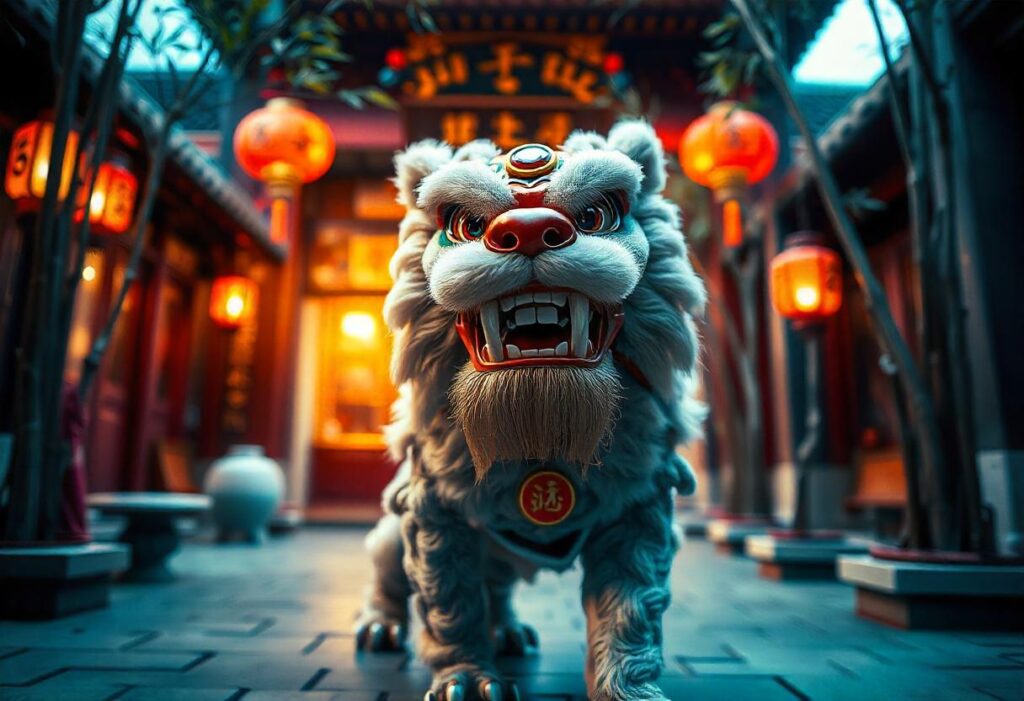The Magnificent Foo Dog: Guardians of Luck and Legacy 2025

What Are Foo Dogs? A Look Into Their Origin
Foo Dogs, also known as Fu Lions or Shishi, are Foo Dog fascinating creatures that blend mythology, culture, and art. Despite their name, Foo Dogs are not dogs at all but rather stylized lion statues. They hail from ancient Chinese traditions and are revered for their role as protectors of homes, temples, and other important buildings.
The history of Foo Dogs dates back thousands of years. Lions were not native to China, but their image reached the country through travelers and traders along the Silk Road.
The Chinese associated lions with power, strength, and protection, incorporating them into their Buddhist practices as guardians of the dharma. Over time, these mythical lions evolved into the iconic Foo Dogs we recognize today, often crafted from stone or bronze and elaborately decorated.
The term “Foo Dog” itself is a Western misnomer, likely derived from “Fu,” meaning prosperity or happiness in Chinese. In traditional Chinese culture, they are known as “Shishi,” which translates to “stone lions.” Their primary purpose? To keep evil spirits at bay while ushering in good fortune and harmony.
The Symbolic Power of Foo Dogs
Foo Dogs are more than just decorative statues; they carry profound symbolic significance. Always presented in pairs, they represent balance and protection. Each pair consists of a male and female, each with unique roles and attributes.
- The Male Foo Dog: The male is often depicted with a paw resting on a ball. This ball symbolizes the world or universal harmony, signifying the male\u2019s role in guarding the structure and maintaining its stability and power.
- The Female Foo Dog: The female, meanwhile, is usually shown with a cub beneath her paw, symbolizing nurture, family, and continuity. She is seen as the protector of those within the structure, ensuring the well-being of its inhabitants.
The fierce expressions of Foo Dogs are no accident. Their menacing faces and bared teeth are designed to intimidate and scare away malevolent spirits. Beyond their expressions, every detail—from the curls in their manes to the intricate designs on their bases—serves a symbolic purpose, enhancing their role as powerful protectors.

Placement Matters: How to Use Foo Dogs Correctly
Foo Dogs are not randomly placed; their is critical to their effectiveness. Traditionally, they are situated at the entrance of buildings, such as temples, palaces, or homes, acting as sentinels against negative energy. The proper placement involves putting the male on the right side (as you face the entrance) and the female on the left.
Here are some key tips for using Foo Dogs in your space:\n\n1. Positioning and Orientation: Ensure the Foo Dogs face outward, as their primary role is to ward off external threats. Facing them inward diminishes their protective power.\n\n2. Proportion and Scale: The size of Foo Dogs should be proportional to the entrance they guard. Larger entrances call for larger Foo Dogs to maintain visual balance and impact.\n\n3.
Respect the Pairing: Never separate a pair of Foo Dogs. Their symbolic balance is rooted in their duality; separating them disrupts their harmony and diminishes their protective qualities.\n\nModern homeowners and business owners often incorporate Foo Dogs into gardens, porches, or even interior spaces. Regardless of their setting, it\u2019s essential to maintain them—keeping them clean and free of damage ensures they retain their symbolic strength.
Foo Dogs in Modern Times
While Foo Dogs remain steeped in traditional symbolism, they have also found a place in modern design and culture. Today, you might spot Foo Dog motifs in jewelry, furniture, tattoos, and even fashion. Their intricate designs and cultural heritage make them popular for anyone looking to add an exotic or spiritual touch to their surroundings.
Foo Dogs are also prominent in pop culture, often appearing in films, video games, and art. Their portrayal as mystical, powerful creatures underscores their enduring appeal. These modern depictions often blend their ancient symbolism with fantastical elements, introducing Foo Dogs to new generations and audiences.
For collectors and enthusiasts, Foo Dogs represent a connection to a rich cultural past. Whether sourced as authentic antique sculptures or modern reproductions, owning Foo Dogs can bring a sense of history, beauty, and positive energy into a space.
Conclusion: Why Foo Dogs Are Worth Celebrating
Foo Dogs are more than just ornamental statues; they are embodiments of protection, balance, and prosperity. With roots in ancient Chinese culture and a legacy that spans centuries, Foo Dogs continue to captivate and inspire. Their blend of artistic craftsmanship and spiritual significance makes them timeless icons, cherished across cultures and generations.
Whether you\u2019re drawn to their fierce beauty, their protective qualities, or their historical depth, Foo Dogs offer something truly unique. By understanding their origins, symbolism, and proper use, you can appreciate their role as guardians not just of buildings but of the values they represent: strength, harmony, and prosperity.

